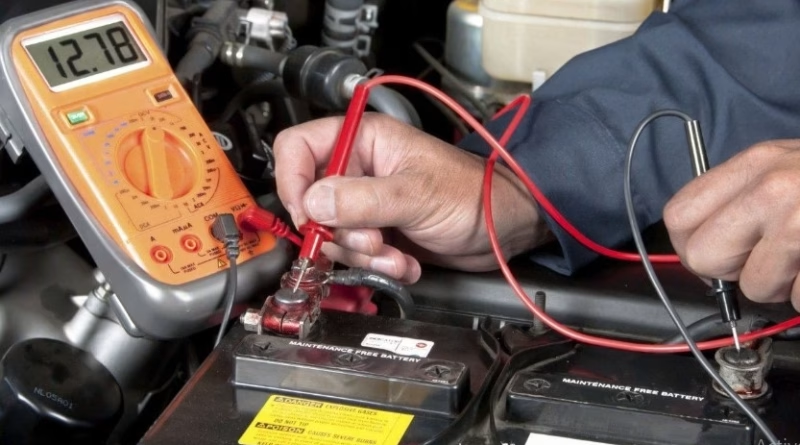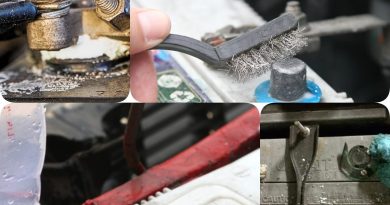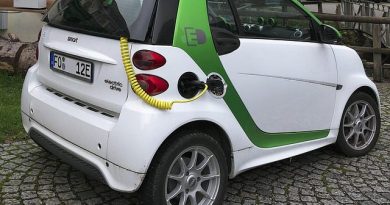Car Battery Maintenance Schedule: The Ultimate Guide
Maintain your car battery’s health! Also discover a detailed maintenance review, Our expert tips, and solutions for optimal battery life
Your car’s battery is the heart of its electrical system. From starting the engine to powering lights, infotainment, and safety features, everything depends on a reliable, well-maintained battery. Yet, many drivers only think about their battery when their car refuses to start — often at the most inconvenient time.
A poorly maintained battery doesn’t just lead to frustration; it can leave you stranded, shorten your car’s lifespan, and cost you more in premature replacements. The good news? With the right maintenance schedule and best practices, you can extend your battery’s life, prevent breakdowns, and save money.
In this guide, we’ll cover:
- How car batteries work and why maintenance matters.
- A complete step-by-step battery maintenance schedule.
- Signs your battery is failing (and how to catch them early).
- Global average lifespans and replacement costs.
- DIY care tips, pro servicing, and modern tools to track battery health.
- FAQs, comparisons, case studies, and CTAs to keep you prepared.
By the end, you’ll have a clear roadmap to ensure your battery stays strong — wherever the road takes you.
Why Battery Maintenance Matters
A car battery doesn’t last forever. On average, most batteries survive 3–5 years, depending on climate, driving habits, and maintenance. Without proper care, lifespan drops dramatically, forcing replacements every 2 years or less.
A neglected battery can cause:
- Starting failures (especially in extreme cold or heat).
- Electrical glitches (malfunctioning power windows, flickering lights).
- Higher replacement costs (due to premature failure).
- Strain on the alternator and starter motor, leading to even bigger repair bills.
Think of your car battery like a smartphone battery. If you constantly drain it to zero, ignore software warnings, and never clean the charging port, it won’t last long. But with consistent charging and care, it can easily double its life.
How a Car Battery Works (Simple Breakdown)
- Type: Most cars use a 12-volt lead-acid battery. Modern EVs and hybrids also rely on advanced lithium-ion systems.
- Function: Provides the initial burst of electricity to start the engine, then powers electrical systems when the alternator isn’t sufficient.
- Recharge Cycle: Once the engine runs, the alternator recharges the battery continuously.
In short: the battery stores energy, the alternator replenishes it, and your car consumes it. Break any part of this cycle, and problems begin.
Car Battery Maintenance Schedule
Here’s a practical timeline for keeping your car battery in peak condition.
Weekly Checks
- Look for corrosion on battery terminals (white, ashy buildup).
- Check for loose connections; wiggle the cables to ensure they’re tight.
- Observe warning signs: dimming lights, slow crank.
Monthly Maintenance
- Clean the terminals with baking soda + water or a battery cleaner.
- Top up distilled water (for non-sealed lead-acid batteries).
- Test voltage with a digital multimeter (should read 12.6V when off, 13.7–14.7V when running).
- Inspect the case for cracks or bulges — both indicate overheating or internal damage.
Seasonal Care
- Winter: Cold weather reduces battery capacity by up to 50%. Park indoors if possible, use a trickle charger, and avoid short trips.
- Summer: Heat evaporates electrolyte fluid. Inspect levels frequently, especially before long drives.
Annual Checkup
At least once a year, ask your mechanic to:
- Perform a load test to simulate real-world demand.
- Inspect alternator output (weak alternators shorten battery life).
- Check charging system wiring for wear or corrosion.
Replacement Cycle
- Standard lead-acid battery: Replace every 3–5 years.
- AGM (Absorbent Glass Mat) battery: Replace every 4–7 years.
- Lithium-ion (in EVs): Can last 8–15 years but requires advanced monitoring.
Pro Tip: Mark your battery’s installation date with a sticker. This helps you track age and replacement timing.
Signs Your Car Battery Is Failing
Catch these red flags early to avoid roadside emergencies:
- Slow Engine Crank: Engine takes longer than usual to start.
- Dim Lights: Headlights and dashboard lights appear weaker.
- Electrical Failures: Windows, seats, or infotainment system lag.
- Frequent Jump-Starts: Needing a boost more than once every few months signals trouble.
- Swollen Battery Case: Caused by overheating — replace immediately.
- Unpleasant Smell: Rotten egg odor = leaking battery acid.
- Battery Warning Light: Dashboard alert means charging issues.
From slow cranks to dim lights, early warning signs shouldn’t be ignored. AAA outlines the top battery failure symptoms.”
Global Lifespan & Replacement Costs
| Region | Average Battery Lifespan | Replacement Cost (USD) | Notes |
|---|---|---|---|
| USA | 3–5 years | $100–$300 | Higher for AGM/lithium |
| UK | 3–4 years | £80–£250 | Weather impacts durability |
| Asia | 2–4 years | $70–$200 | Humidity shortens lifespan |
| Africa | 2–3 years | $60–$180 | High heat, dust reduce life |
Luxury vehicles, hybrids, and EVs often require specialized batteries costing $500–$2,000+.
DIY Car Battery Care
Tools You’ll Need:
- Multimeter
- Battery cleaner or baking soda solution
- Wire brush
- Safety gloves & goggles
- Trickle charger (optional)
Steps:
- Turn off engine and wear protective gear.
- Disconnect negative (-) cable first, then positive (+).
- Clean terminals with brush + solution.
- Rinse with water and dry.
- Reconnect positive (+) first, then negative (-).
- Check voltage with multimeter.
👉 Repeat monthly to prevent corrosion and keep connections strong.
“You can keep your battery healthy at home with simple steps like cleaning terminals and checking voltage. Advance Auto Parts offers a step-by-step DIY guide.”
Professional Maintenance & Modern Tools
Mechanics use advanced tools for precise battery care:
- Conductance testers: Measure battery health instantly.
- Load testers: Simulate real driving demand.
- OBD-II scanners: Detect hidden charging system faults.
- Battery maintainers: Keep infrequently driven cars (like classic cars or seasonal vehicles) charged without overcharging.
AI-powered apps now let drivers track battery health directly on their smartphones, sending alerts before failure.
“AGM batteries cost more but last longer and perform better in cold weather. Consumer Reports compares AGM vs traditional batteries.”
Real-Life Case Studies
- Case 1: Winter Struggles in Canada
A driver’s 3-year-old battery kept failing in -15°C. After installing a heated battery blanket ($50), the battery lasted two more winters without issues. - Case 2: Forgotten Maintenance in Dubai
A car left parked outdoors during summer saw its battery swell due to extreme heat. The cost of replacement: $250. Preventable with simple monthly checks. - Case 3: Business Fleet in the USA
A logistics company added smart monitors across 50 delivery vans. Result: 30% fewer breakdowns and $15,000 saved in roadside assistance fees annually.
FAQs
Q: Can I overcharge a car battery?
Yes. Overcharging can damage internal plates. Use a smart charger with auto shut-off.
Q: Should I disconnect the battery if not driving for months?
Yes. Or use a trickle charger to keep it topped up.
Q: Does idling recharge the battery?
Not effectively. Driving at highway speeds charges faster than idling.
Q: Can extreme weather kill a new battery?
Yes. Heat evaporates electrolytes, cold slows chemical reactions — both shorten lifespan.
Q: Are premium batteries worth it?
AGM and lithium batteries cost more but last longer, recharge faster, and withstand harsh climates better.
Comparisons: AGM vs Lead-Acid Batteries
| Feature | Lead-Acid | AGM |
|---|---|---|
| Cost | Lower ($80–$150) | Higher ($150–$300) |
| Lifespan | 3–5 years | 4–7 years |
| Maintenance | Needs water checks | Maintenance-free |
| Performance in Cold | Average | Excellent |
| Best For | Budget, standard cars | Premium cars, heavy electronics |
- Learn to spot Signs of a Failing Alternator before it drains your battery.
- Build an Emergency Fund to cover unexpected battery replacement costs.
- Discover how AI Tools in 2025 help track vehicle health.
- Compare Riskiest vs Safest Investments for better money allocation on car care.
Don’t wait until you’re stranded with a dead battery.
- Check your battery monthly.
- Schedule an annual test with your mechanic.
- Invest in a smart charger or monitor.
A little proactive care goes a long way. Protect your time, money, and peace of mind — because the best trips start with a car that always starts.



